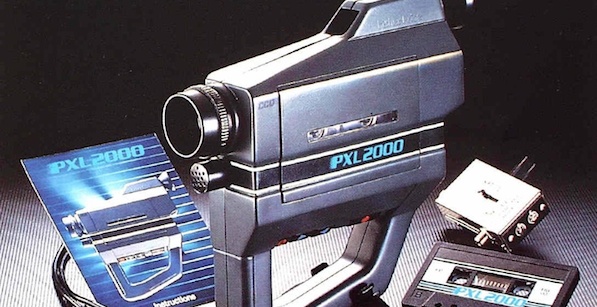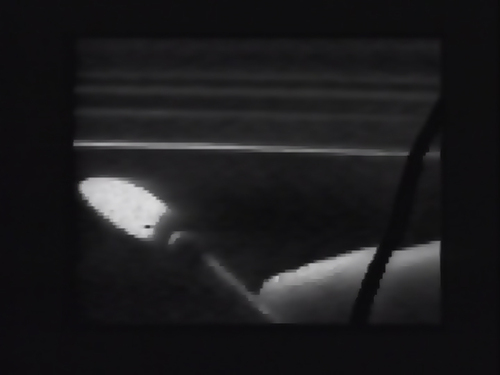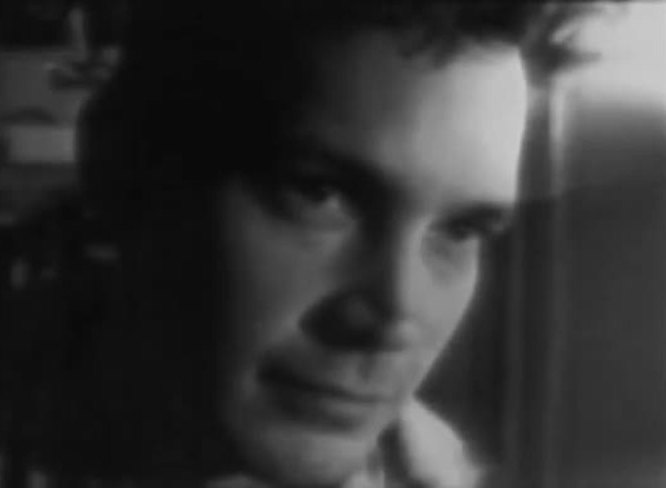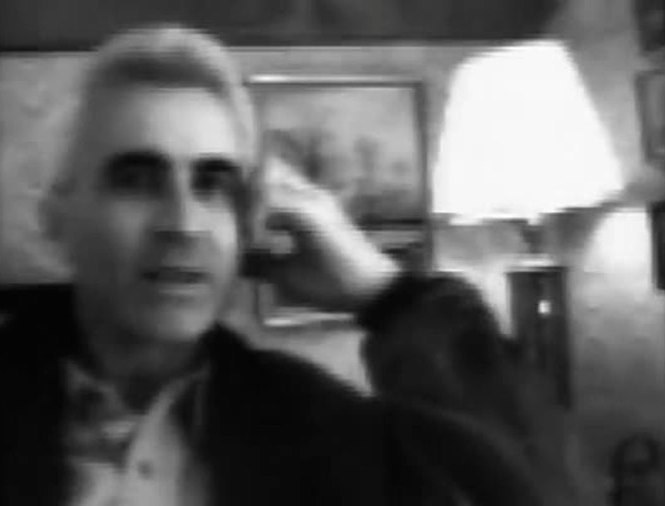
The Fisher-Price PixelVision—also known as the PXL-2000 and KiddieCorder, among other names—was a video camera aimed by a toy company at its usual audience of children. But at nearly $200 retail dollars initially, it was awfully expensive for most parents to purchase for their wee ones when launched in 1987. Within a year, it was taken off the market, a failed if forward-thinking commercial gamble.
Yet PixelVision’s easy operating system (which recorded onto a standard audio cassette tape) and the “primitive” results it produced soon made it a sort of cult format amongst filmmakers. They found its lo-res, black-and-white imagery a textural plus, one with a distinctly “hand-made” feel. Music video directors utilized its air of subterranean intimacy in clips for bands like Sonic Youth; experimental filmmakers like Peggy Ahwesh and Sadie Benning were likewise attracted.
Here’s a short sampler of notable PixelVision titles, admitted culled from a pretty short list—Benning and Michael Almereyda (whose terrific albeit standard-format dramatic feature Experimenter opens theatrically this fall) remain the leading auteurs of the form.

Me and Rubyfruit (1989)
Sadie Benning was not thrilled at first when her father (esteemed landscape-focused experimental filmmaker James Benning) presented her with the “toy camera” at age fifteen. Yet she began using it to such warmly idiosyncratic and relatable means in early shorts like this one (which references Rita Mae Brown’s classic 1973 lesbian-themed novel) that she became a teenage video-art star. She broke other records by earning a Rockefeller Grant and a place in the Whitney Biennial at age nineteen. Her status as a queer-positive role model has been cemented by co-founding (in 1998) the giddily inventive “feminist post-punk” band Le Tigre, and by complex works on gender issues in various media ever since.
Another Girl, Another Planet (1992)
Presumably named after short-lived English band The Only Ones’ most (only?) famous song, Almereyda’s playful portrait of love and angst amongst NYC hipsters of its era features a kick-ass soundtrack including Marianne Faithfull, Ike Turner, Nick Cave, Psychic TV and Lefty Frizzell. It also features a hefty chunk of the 1935 Fleischer Brothers “Color Classic” Dancing on the Moon. In contrast to that vintage ‘toon’s harmonious space-traveling animals in luv, Planet’s humans sport good taste in culture and bad powers of relationship decision-making. Their uphill-crawl perspective is perhaps defined by the line “The main thing is…not to be bitter.”
At Sundance (1995)
Almereyda continued to employ PixelVision in his movies, including parts of the low-key vampire movie Nadja (1994) and his modern-dress, Ethan Hawke-starring Hamlet (2000). But he also used it throughout one feature that’s a little-known treasure trove for fans of indie cinema. Co-directed with prolific producer Amy Hobby, At Sundance points its plastic toy lens at an extraordinary array of filmmakers in attendance at the festival that year. Some, like Robert Redford, Haskell Wexler and a very stoned-acting Peter Fonda, were already industry veterans. But most were newbies with much ahead of them, promoting their breakthrough film: James Mangold (Heavy), Atom Egoyan (Exotica), Danny Boyle (Shallow Grave), Rebecca Miller (Angela), Todd Haynes (Safe), Tom DiCillo (Living in Oblivion), Lee Tamahori (Once Were Warriors), James Gray (Little Odessa), Maria Maggenti (The Incredibly True Adventure of Two Girls in Love) and more. All expound eloquently on a simple question: “What is the future of cinema, and are you optimistic and pessimistic?” Many were playfully curious about the PixelVision camera they were being filmed with. Though no one was as dependably crankypants as already-established iconoclast Abel Ferrara, such a Noo Yawk bad boy he feels compelled to punch the camera to provide a “special effect.”

Pee-Wee Goes to Prison (2003)
An infamous short utilizing action-figure dolls (and even PEZ containers) as “actors,” this guilty pleasure from artist John Humphrey imagines Pee-Wee Herman being busted on a drug-peddling charge. He experiences the rough hands of media, legal and prison justice before being pardoned by Governor Jesse “The Body” Ventura. Bookended by color sequences, the bulk of this campy nightmare is shot in black-and-white PixelVision.





